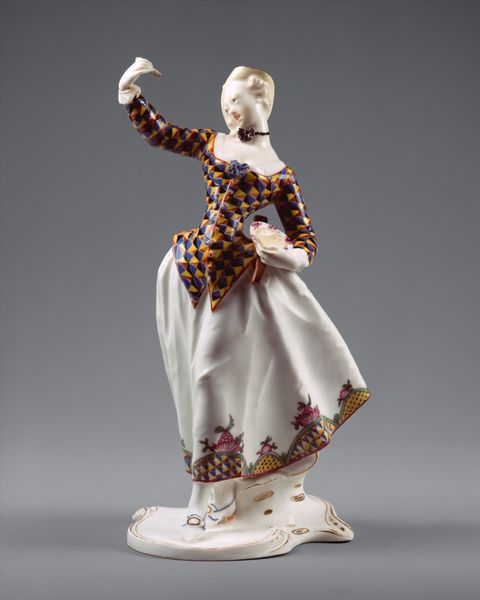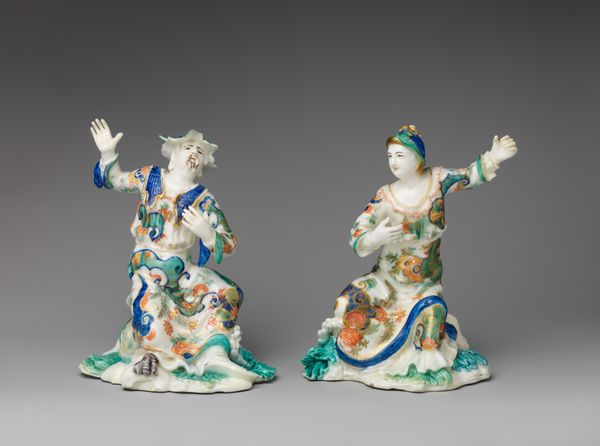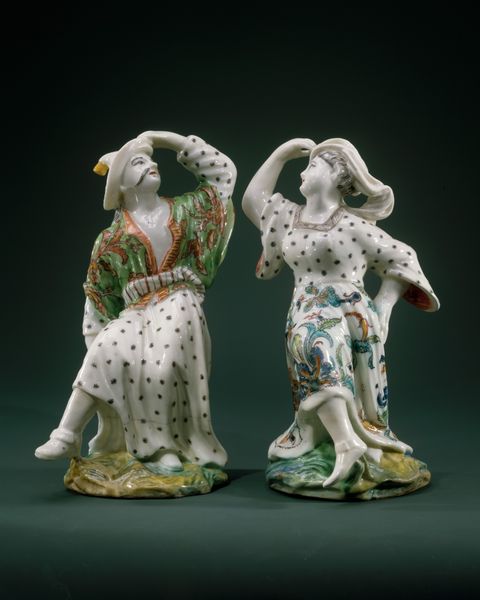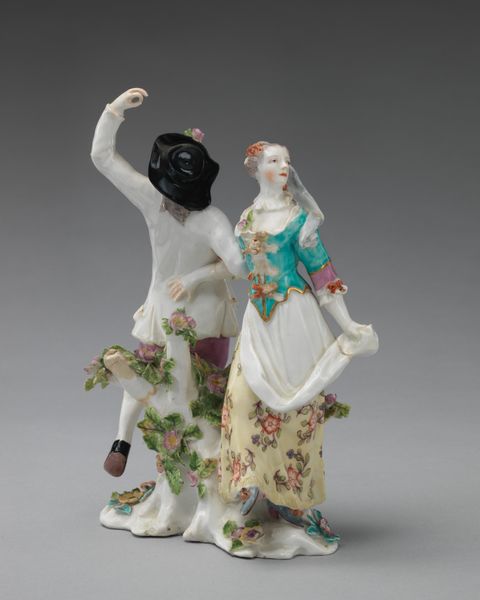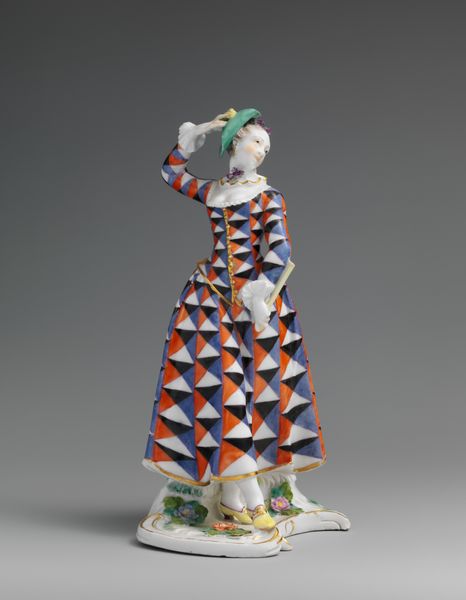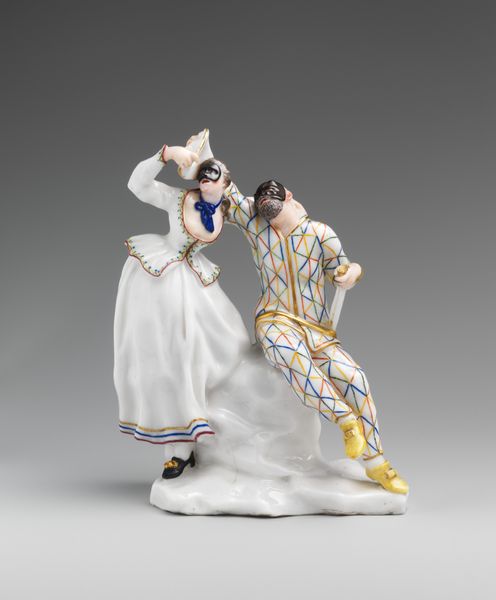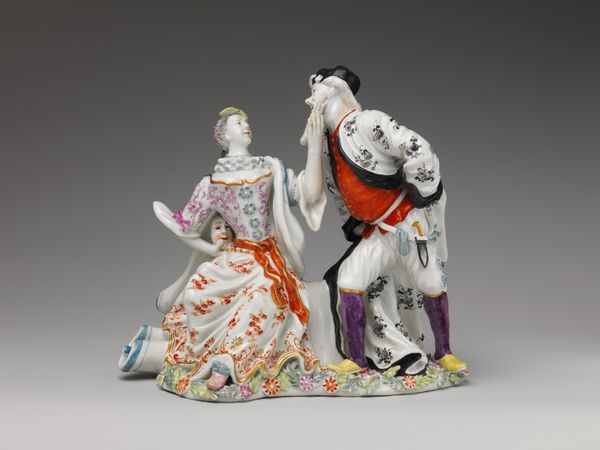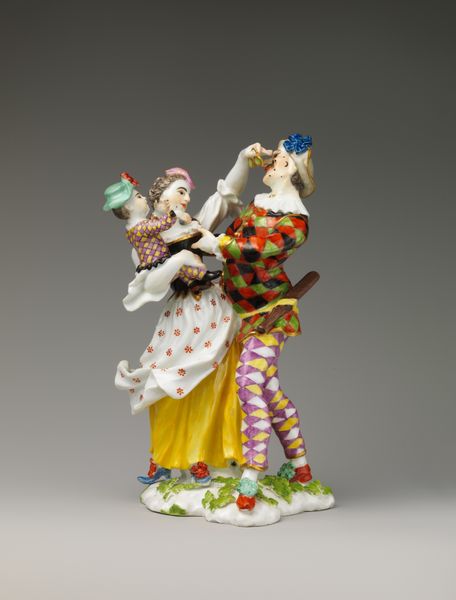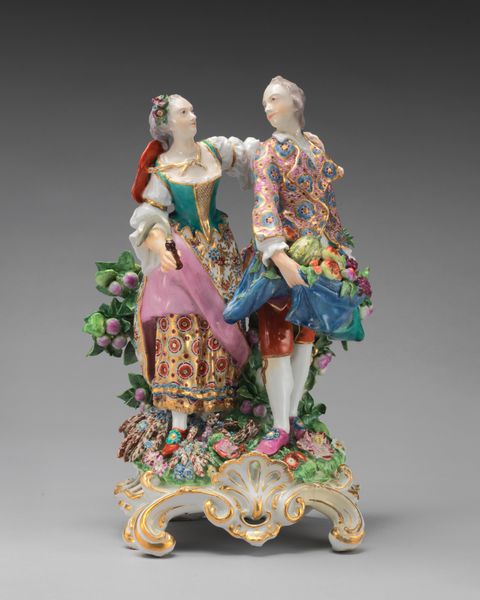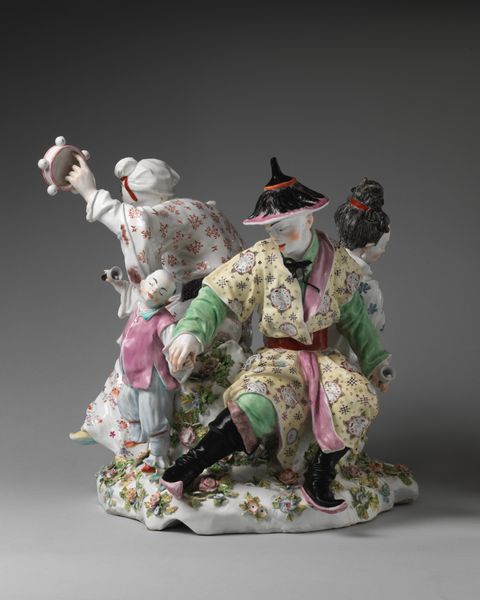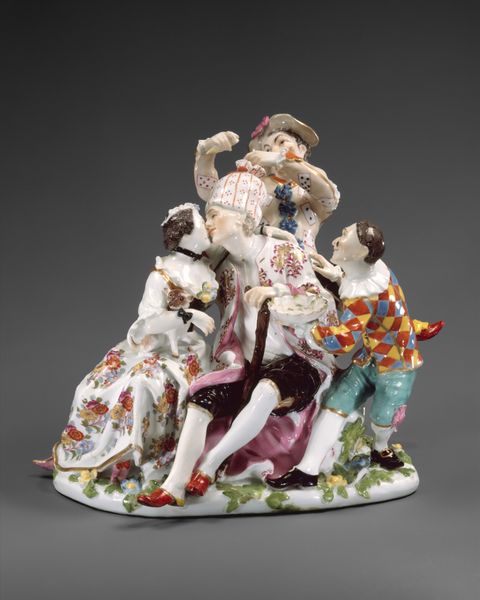
ceramic, porcelain, sculpture
#
allegory
#
ceramic
#
porcelain
#
figuration
#
sculpture
#
decorative-art
#
miniature
#
rococo
Dimensions: Height: 7 7/8 in. (20 cm)
Copyright: Public Domain
Curator: The whimsical sculpture before us is titled "Harlequin," crafted between 1755 and 1765 by the Nymphenburg Porcelain Manufactory. It resides here at the Metropolitan Museum of Art. Editor: What immediately strikes me is the material; porcelain gives it such a delicate, almost ethereal quality. The rhomboid patterns on the figures’ clothing create an engaging interplay of colour and shape that practically dances before your eyes. Curator: The "Harlequin" embodies the Rococo love for theatre, ornamentation, and the commedia dell'arte. We must consider how the Bavarian court embraced such characters as symbols of wit and social commentary. Editor: Yes, and how that visual language translates so effectively, particularly the contrasted diamond patterns. Visually, it emphasizes the movement and energy of the figure, an aesthetic interpretation of the performer’s liveliness. I appreciate its clean yet effective design language. Curator: Precisely. The sculptures were part of a larger suite of figures intended for aristocratic display, celebrating both social status and refinement of artistic taste. Imagine the figures aligned on a nobleman's table! The consumption of art as a social practice. Editor: I can envision them arranged precisely so, perhaps reflected in a mirrored surface to amplify the display. One is a traditional rendition of Harlequin, while the other presents in almost an inversed position. It makes me think if we were to rotate and recontextualize this design language, it would serve the piece almost as well, suggesting that even in rearrangement there is cohesion. Curator: These objects provided their owners platforms for signaling sophistication, subtly wielding soft power through consumption, and even social critique under the guise of playful entertainment. This porcelain Harlequin provides invaluable insight. Editor: From a purely aesthetic standpoint, "Harlequin’s" dynamism resides within its material’s surface, which makes me contemplate on surface, ornament and composition. It’s fascinating how these details play into the dialogue with movement and meaning in decorative Rococo art.
Comments
No comments
Be the first to comment and join the conversation on the ultimate creative platform.
